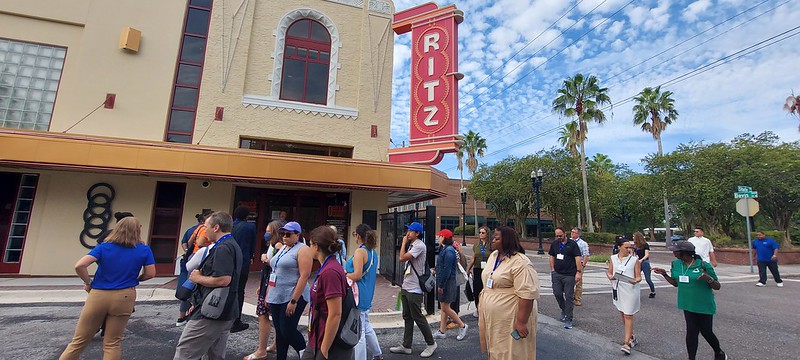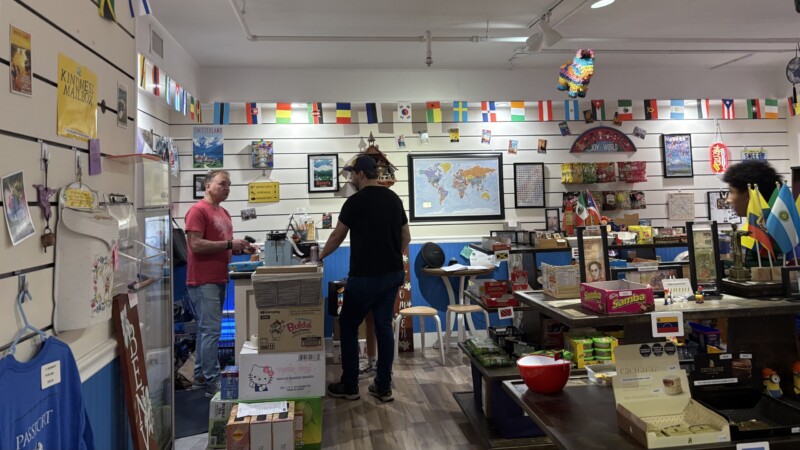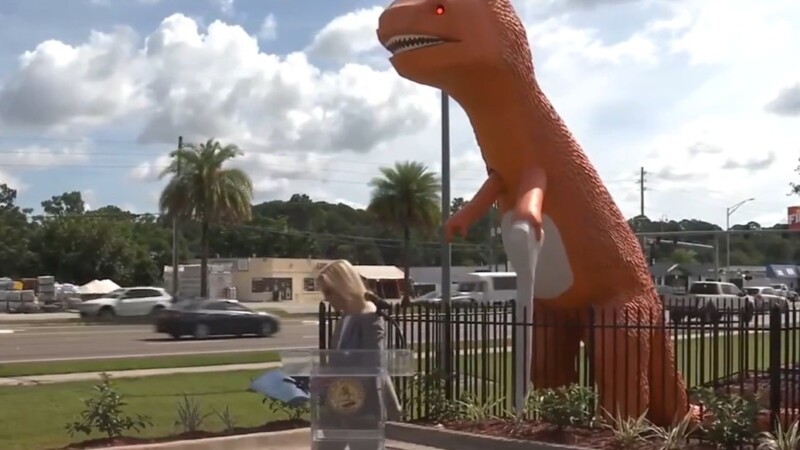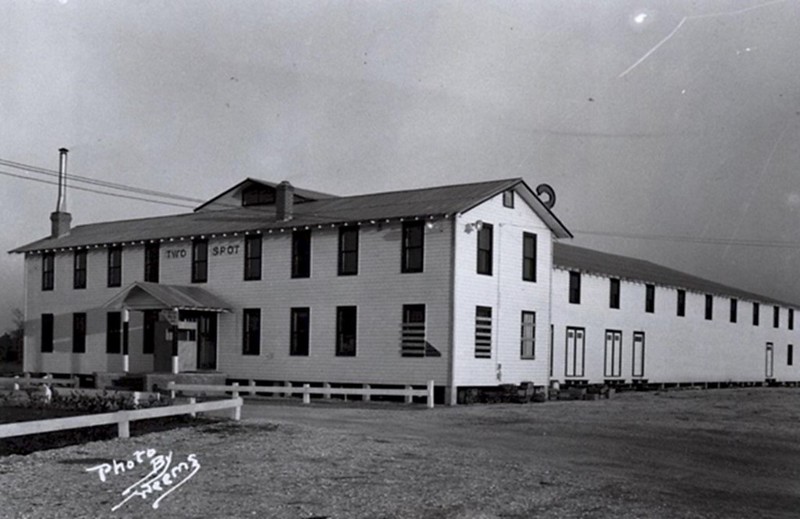
Nearly every city of significant size in the South claims their version of Jacksonville’s LaVilla was the “Harlem of the South.” Here are six other “Harlems of the South” — and why LaVilla deserves to be recognized as much more.
Harlem and the Harlem Renaissance

Harlem is a large neighborhood in the northern section of New York City’s Manhattan. Originally a Dutch village, Harlem was the world’s largest Black neighborhood for much of the 20th century. After World War I, as a result of the Great Migration, a period of artistic work without precedent in the American Black community took place in Harlem during the 1920s and ’30s. This period in time became known as the Harlem Renaissance and has been considered a golden age in Black culture, manifesting in literature, music, stage performance and art. Since that time, nearly every Southern city of decent size prior to the passage of the 1964 Civil Rights Act has claimed their largest historic Black neighborhood was the “Harlem of the South.”

Seven Harlems of the South
1. Belmont-DeVilliers
Pensacola, Florida

A result of Florida’s Jim Crow laws mandating segregation in 1905, Belmont-DeVilliers became the historic cultural heart of Pensacola’s Black community. The neighborhood is associated with John Sunday, Jr. Sunday was a 19th century building contractor and philanthropist who constructed hundreds of homes throughout the city. At the time of his retirement, he was said to be the wealthiest Black man in Florida’s Panhandle.
Also known as “the Blocks,” the neighborhood’s jazz and blues era district is centered on the intersection of Belmont and DeVilliers streets. Located just northwest of Downtown Pensacola, Belmont-Devilliers is the only Florida neighborhood included as a part of the Mississippi Blues Trail. Unlike most of the “Harlems of the South,” the neighborhood was not decimated by interstate highway construction during the 1950s and 1960s and it still retains much of its original density, architectural character and sense of place.


2. Central Park (The Scrub)
Tampa, Florida

Tampa’s first African American neighborhood, The Scrub, was settled shortly after the Civil War by freemen emancipated from the area. Significant growth came with the extension of Henry Plant’s railroad in 1883 and the introduction of the cigar industry two years later. From the 1890s through the first half of the 20th century, Central Avenue just north of Downtown Tampa was the center of Black life in the city and the Bay Area’s “Harlem of the South.“
Notable residents included Ray Charles, who recorded his first song, “Found My Baby There,” after living in the city briefly following his moves from Orlando, Jacksonville and St. Augustine during the late 1940s. Following World War II, the construction of public housing projects, Interstates 4 and 275 eliminated much of Central Park from existence.


3. Church Street
Norfolk, Virginia

Laid in 1680, Church Street is one of Norfolk’s original streets. Once an Eastern European immigrant district, the neighborhoods around the corridor began to attract African Americans in the 1920s. By the ’30s and ’40s, Church Street had become the cultural epicenter for the 44,000 African Americans residing in Norfolk. Famed for its live entertainment venues, performances and street music, it evolved to become known as Norfolk’s “Harlem of the South.” Located at 1010 Church St., the Attucks Theater was a well-known destination on the Chitlin Circuit. Backed by the Navy, Norfolk was the first city in the country to have an urban renewal plan approved under the Federal Housing Act. Norfolk then proceeded to destroy much of its urban core, including the Church Street corridor.


4. Jackson Ward
Richmond, Virginia

Located just north of Downtown Richmond, the Jackson Ward was originally developed by European immigrants. Following the Civil War, during Reconstruction, the Jackson Ward became a major center of African American life and culture in the country. By the early 20th century, the Jackson Ward was a “Black Wall Street,” with a number of restaurants, clubs and theaters. Following the 1920s Harlem Renaissance, the neighborhood evolved to be nicknamed the “Harlem of the South” for being a major center of Black entertainment and enterprise from the Great Depression through the early 1950s. In the late 1950s, the Richmond-Petersburg Turnpike (now Interstate 95), was built through the neighborhood, destroying much of it in the process. Despite additional urban renewal projects, the neighborhood was designated as a National Historic Landmark in 1978 with more than 600 significant historic structures. Today, the district boasts more cast iron work than any neighborhood outside of New Orleans.


5. North Nashville
Nashville, Tennessee

North Nashville is another historic African American neighborhood affectionately known as the “Harlem of the South.” Anchored by three historically Black universities, Fisk University, Meharry Medical College and Tennessee State University, North Nashville has historically been the commercial, entertainment and social hub of the city’s Black community. Lined with businesses, theaters, churches and restaurants, Jefferson Street was Nashville’s version of Jacksonville’s Ashley Street. During the late 1960s, Interstate 40 was built through the middle of the neighborhood, decimating the district with the demolition of 650 homes and displacement of 1,400 residents.


6. Overtown
Miami, Florida

Overtown was established in 1896 and grew to become known as a “Harlem of the South”. Miami’s first African American millionaire, Dana Albert Dorsey, was an Overtown resident and shareholder of Jacksonville’s Afro-American Life Insurance Co. Overtown’s Second Avenue corridor of music halls, restaurants, hotels, and entertainment venues came to be known as “Little Broadway” in the 1920s. During the 1950s and 1960s, the neighborhood was decimated by the construction of Interstate 95, Interstate 395 and SR 836. This is a story I know well through my own family history, as my paternal grandmother’s house was razed in the process, leading our family to relocate to another Miami-Dade County neighborhood now known as Model City. Adjacent to Downtown Miami and Wynwood, Overtown today is affected by climate gentrification.


7. LaVilla (Uptown)
Jacksonville, Florida

Located just west of the Downtown core, LaVilla is one of Jacksonville’s oldest historically African American neighborhoods. Named after the LaVilla Plantation, LaVilla was established as a town of its own in 1866 by Francis F. L’Engle. It was Jacksonville’s largest suburb when it was annexed into the city in 1887. Also called Uptown, LaVilla was labeled locally as the “Harlem of the South” because of the vibrant music, food and social scene on thoroughfares like West Ashley Street following the 1920s Harlem Renaissance. Like the other Harlems of the South, much of the neighborhood was also lost to urban renewal projects, including the construction of Interstate 95 and the 1993 River City Renaissance plan. However, like Memphis and New Orleans, two Southern cities that promote their own cultural contributions to present day society, there would be no Harlem without LaVilla.
The 1920s Harlem Renaissance is largely a result of the first Great Migration. Roughly between 1910 and 1930, 1.6 million migrants left mostly Southern, oppressive urban communities to migrate to Northern, industrial cities in search of a better life and economic opportunity. What most don’t know is that a poem, “Bound for the Promised Land,” written in Jacksonville and published in the Chicago Defender in 1916, was a significant factor in stimulating what has become known as the Great Migration. That poem, written by Eastside resident Matthew Ward, is largely responsible for there being a Harlem in New York, a Black Bottom in Detroit and a Bronzeville in Chicago. The present day United States would not be the same without Jacksonville’s African American community and historic local neighborhoods like LaVilla and the Historic Eastside.

As early as 1870, LaVilla was having its own renaissance with a majority Black population attracted to jobs in Jacksonville’s booming hotel, lumber, port, building, and railroad industries. Before 1905, the first Black-owned theater in the South and a Black-owned streetcar company were operating in LaVilla. In addition, The Rabbit’s Foot Company, headquartered in LaVilla, dominated the entertainment scene throughout the Southeast. By 1909, Ashley Street’s Airdome Theatre was recognized as the largest theater exclusively for African Americans in the South.
In 1910, the first published account of blues singing on a public stage took place at the Airdome. Historically a Jewish and Italian community, at that same time, Harlem’s population was only about 10% African American. However, with Jacksonville playing a leading role in the South, the tide was about to change for America’s Northern and Midwestern industrial centers. By 1916, recruiters from two Northern railroads, the Pennsylvania and the New York Central, were successfully drawing African American workers away from Jacksonville. Due to economic conditions, white militancy, and Jim Crow laws, 6,000 African Americans left Jacksonville alone between 1916 and 1917 as a part of the first Great Migration.

By 1930, the end of the first Great Migration, African Americans accounted for 70% of Harlem’s population and the neighborhood had become associated with the New Negro movement. Jacksonville’s loss became Harlem’s gain. The zenith of this “flowering of Negro literature,” as Harlem resident and former Jaxson James Weldon Johnson preferred to call the Harlem Renaissance, took place between 1924 and 1929. However, the cultural activities that made the Harlem Renaissance had been common in places like Jacksonville’s LaVilla in previous decades. What Harlem did is introduce the Black experience already taking place in neighborhoods like LaVilla, to the rest of the society, thus redefining how the world viewed African Americans.

While Harlem may be many things, its more accurate to label the New York neighborhood as a “LaVilla of the North.” However, exposing Jacksonville’s multicultural historical contributions and influence on the development of the country isn’t Harlem’s or New York’s responsibility.
Are we a “Harlem of the South”? If that definition is simply linked to having a vibrant Black cultural district prior to desegregation, it is, as well as every similar community in other Southern cities that share that same story. Yet LaVilla is much more. At the very least, that’s what history tells us. Maybe it’s time for us to step up and claim Lavilla’s own story and true significance and influence.
Contact Ennis at edavis@moderncities.com






